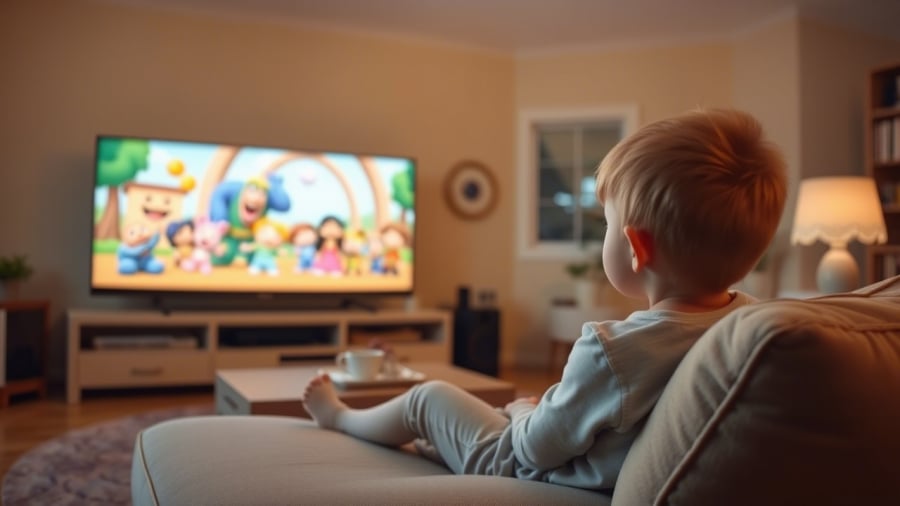“My daughter, who is five years old, was once obsessed with short online videos,” a mother shared. “If she didn’t get to watch them for at least an hour every day, she would throw a tantrum until she got her way. As a result, she would be tired and lacking focus the next morning at school. Her temperament also became more irritable and short-tempered, which worried my husband and me immensely.”
Determined to help her daughter overcome this issue, she sought advice from child psychologists and neurology professors and applied her personal experiences to find the most suitable method.
After nearly a year of persistent adjustments, her daughter’s screen time significantly reduced. Instead, she developed an interest in healthier activities and became more stable and cheerful.
Experts warn that many children are currently facing similar issues. In fact, there are four silent brain destroyers that are negatively impacting children’s brain development, which parents need to be aware of.
The 4 Brain Destroyers Silently Harming Your Child’s Brain
The Trap of Meaningless Short Videos
In this era of booming social media platforms, children can easily get sucked into the vortex of “funny,” “attractive,” and “curious” short videos. With their ultra-short duration, ranging from a few seconds to a minute, these videos create an instant feeling of satisfaction, making children crave more and struggle to stop watching.
However, continuously feeding the brain this meaningless content will eventually leave children’s minds empty, with slowed reactions and diminished thinking abilities.
A neurology professor compares each 15-second short video to a “stimulation point,” akin to continuously “electrocuting” the brain. The brains of children who frequently watch these videos resemble tofu riddled with bullet holes from a machine gun. Consequently, they face challenges in focusing on studies and other activities requiring attention and patience.

A neurology professor’s warning: Each 15-second short video is like a “stimulation point,” electrocuting the brain.
The Danger of “Like” Addiction on Social Media
Nowadays, numerous children are trapped in the virtual world of social media, eagerly posting images and videos and longing for “likes” from strangers. Each “like” acts as a spiritual dopamine hit, providing a sense of satisfaction and achievement, making them feel like they’ve reached the pinnacle of success.
However, this “virtual satisfaction” carries unseen risks for children’s brain development. The constant pursuit and receipt of “likes” stimulate the brain to produce large amounts of dopamine, leading to a lack of focus, mood swings, and even a loss of interest in meaningful real-life activities.
The Sugar Rush: A Sweet but Deadly Brain Destroyer
Why are children so drawn to sweets? The answer lies in our primal survival instincts: sugar is an abundant energy source, quickly stimulating the brain to release dopamine and providing instant pleasure.
However, this “sweet trap” holds unseen dangers. Overindulging in sweets will make children’s brains “addicted” to strong stimulation, disrupting the natural dopamine production and causing chemical imbalances in the brain.
Scientific research proves that excess sugar can damage the hippocampus, a vital region for learning and memory, leading to a lack of focus, memory decline, and even sluggish thinking and reactions.
More dangerously, the instant satisfaction from sweets can make children impatient and averse to challenges. Instead of persevering in demanding tasks like studying, they may opt for quick rewards from sugary treats, missing opportunities to develop essential future skills.
TV Screen: The Thief of Children’s Intellectual Potential
Excessive TV viewing, especially for extended periods, inadvertently turns children’s brains into passive receivers. The constantly changing images and storylines on TV stimulate dopamine production, providing fleeting pleasure.
However, this high-intensity visual and auditory stimulation makes the brain “lazy,” accustomed to seeking instant gratification without effort. Consequently, children may lose interest in activities requiring intense focus and critical thinking, such as studying and reading.
Therefore, experts advise that children under three should not watch TV at all. For older children, TV time should be strictly monitored and limited to a maximum of one hour per day.

Expert advice: Children under three should refrain from watching TV.
Golden Solutions to Help Children Break Free from These Four Bad Habits
Transform Electronic Devices into Powerful Learning Tools
How can you help your child break free from these negative influences, especially in this digital age? One effective solution is to transform electronic devices, often the culprits of addiction, into powerful tools for learning and development.
Instead of outright prohibition, utilize phones, tablets, etc., to create an engaging and interactive learning environment. Encourage the use of educational apps, beneficial educational videos, or age-appropriate online courses.
Additionally, establish clear rules regarding screen time and encourage your child to adhere to them. This not only satisfies their entertainment needs but also fosters self-management and self-control.
3 Golden Rules for Smart Phone Usage: No More Game Addiction or Lack of Focus
In the digital age, managing children’s screen time is a challenge for many parents. Instead of bans, apply these 3 golden rules for smart and effective phone usage:
– “Active Exploration, No Suggestions”: Encourage children to actively seek videos of their interest instead of passively accepting platform suggestions. This helps them develop information filtering skills and stay away from negative and useless content.
– “Learn First, Then Play”: Agree on a daily study routine before allowing 30 minutes of recreational screen time. This cultivates a habit of prioritizing learning and valuing leisure time.
– “Trade Knowledge for Fun”: Implement an incentive system. For every 10 minutes of educational videos (e.g., science experiments), reward your child with 5 extra minutes of recreational screen time. This blends learning and fun, stimulating curiosity and knowledge expansion.
Expert Tip: It’s crucial for the entire family to reduce screen time and video consumption together. Create engaging family activities. Ms. Lan, a parent, shares, “My family has a ‘Mobile Phone Cleanup Day’ once a month, where we go out and explore new experiences. This has helped my children break their phone addiction.”
Snack Time Transformation: Healthy Eating and Intellectual Development
How can you satisfy your child’s cravings for snacks while ensuring their health and intellectual development? Transform boring snack times into fun and educational experiences.
Explore the world of healthy snacks together by making fruit and yogurt popsicles or air-fried crispy potato chips in the kitchen. Educate your child about the dangers of trans fats and the importance of healthy food choices.
Unleash Intellectual Potential through Enriching Games
Instead of letting your child stare at screens, encourage them to engage in intellectual games like jigsaw puzzles, Lego building, chess, or crafts.
These games offer not just enjoyment but also enhance thinking, creativity, and manual dexterity.
By combining healthy snacking with intellectual games, you’ll foster good habits and promote holistic development. Your child will also enhance their focus and perseverance in all endeavors.
The journey of rebuilding your child’s brain requires unwavering patience and dedication from parents. It’s an investment in their future, where love and understanding play pivotal roles.
Deep within every child’s soul is a longing for a sense of achievement and fulfillment. The sheer joy of solving a challenging puzzle, the delight in witnessing the first bloom of a nurtured flower, and the pure happiness that springs from the heart—these are the invaluable treasures that nourish a child’s soul, something the alluring virtual world can never offer.




























